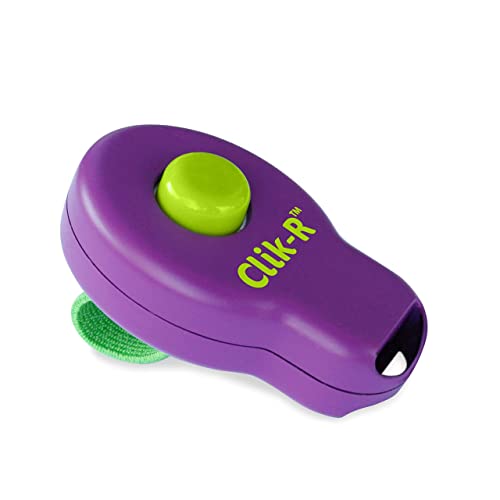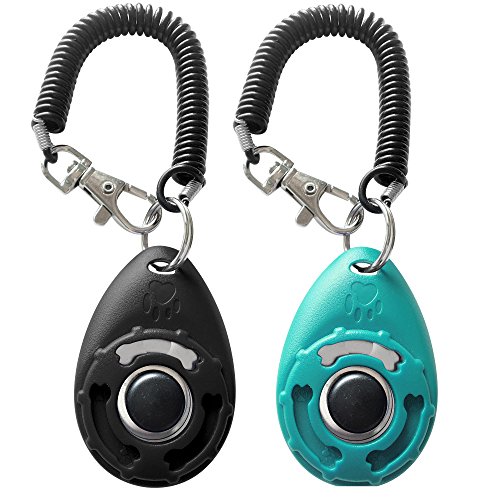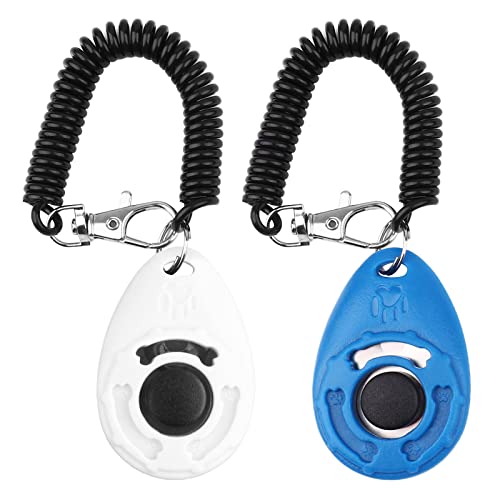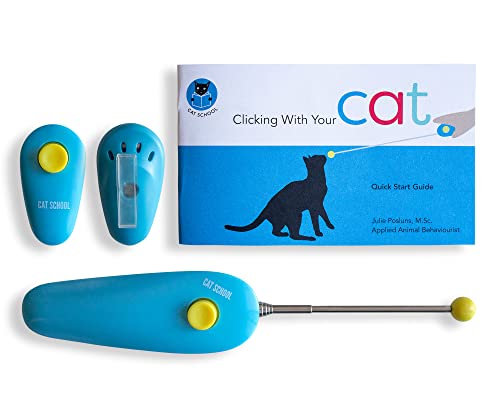Ever wished for a magic feline translator, a way to truly bridge the communication gap between human and cat? Imagine uttering a simple phrase, a chosen sound, and watching your feline companion, often seemingly engrossed in their own mysterious agenda, actually respond, actually listen, and come willingly to your side. Does the very notion sound like a whimsical fantasy, a delightful impossibility reserved for dog owners and fairytale pet companions? If you harbor the common belief that cats are inherently aloof, stubbornly independent, and fundamentally untrainable, prepare to have your feline-centric world gently, yet firmly, turned upside down. While it’s true that cats may not enthusiastically retrieve your slippers or perform elaborate acrobatic tricks on command, dismissing their capacity for learning and responsiveness is a profound underestimation of their intelligence and their ability to form meaningful connections with their human companions. Teaching your cat to come when called, that seemingly simple yet remarkably powerful recall command, is not just a pipe dream reserved for only the most exceptionally gifted feline gurus. In fact, with the right understanding of feline motivation, a dash of patience, and a generous sprinkle of positive reinforcement, you can absolutely unlock your cat’s “Come Here, Kitty!” potential, transforming them into a surprisingly attentive and responsive member of your household. This isn’t about forcing feline obedience or stripping away their cherished independence; it's about fostering a deeper bond, enhancing communication, and adding a valuable, and often wonderfully convenient, skill to your shared feline-human language, proving once and for all that cats are not only trainable, but often surprisingly eager to learn, especially when the rewards are truly… rewarding.
Why embark on this training journey? Why invest the time and effort in teaching your cat to reliably respond to a recall command? The answer, far beyond mere novelty or bragging rights, lies in the wealth of practical benefits that a solid recall offers, benefits that extend to both your peace of mind and your cat's overall well-being. Perhaps the most compelling reason to train a recall is the inherent element of safety and the invaluable peace of mind it provides. Imagine the scenario: your cat, usually an indoor devotee, unexpectedly slips out the door, drawn by the allure of the great outdoors. Panic sets in, visions of frantic searches dance in your head. But then, a calm, clear voice within you remembers your training. You step outside, call your cat’s recall cue, and with a surge of relief, you see a familiar furry form emerge from under the bushes, trotting back towards you, drawn by the positive association you have so carefully cultivated. In that moment, the power of recall training is undeniable, transforming a potentially stressful and dangerous situation into a moment of reassuring connection. Beyond accidental escapes, a reliable recall can also be a lifesaver within the home. Need to swiftly call your cat away from a potentially hazardous situation – the tempting allure of a hot stove, an open window, cleaning chemicals left within reach? A well-trained recall becomes your immediate lifeline, allowing you to intervene quickly and effectively, preventing potential accidents and safeguarding your feline companion from harm. The peace of mind that comes from knowing you can reliably get your cat’s attention and have them respond when you truly need them is immeasurable, a quiet reassurance that permeates your daily life as a cat owner. But the benefits of recall training extend far beyond mere practicalities and safety concerns; it’s also a powerful catalyst for strengthening the very fabric of your bond with your feline friend, enhancing communication and deepening your interspecies understanding. Training, in its essence, is an interactive activity, a shared experience that fosters connection and strengthens the lines of communication between you and your cat. It’s a focused, intentional interaction that transcends the everyday routines of feeding and petting, creating a dedicated space for focused engagement and mutual learning. Through training, you begin to understand the nuances of your cat’s responses, their learning style, their individual motivations, and they, in turn, learn to interpret your cues, your expectations, and the positive reinforcement you offer. This two-way street of learning fosters a deeper level of understanding and communication, enriching your relationship and building a stronger, more empathetic bond between you and your feline companion. The positive associations built through recall training – the treats, the praise, the focused attention – all contribute to your cat’s perception of you as a positive and rewarding presence in their lives. They learn that responding to your call leads to pleasant outcomes, strengthening their positive connection to you and making them even more inclined to seek out your company and interaction. Beyond the profound impact on safety and bonding, a reliable recall command simply makes daily life with your feline companion easier, smoother, and less stressful for both of you. Imagine the ease of gathering your cat for routine veterinary appointments, no more frantic chases around the house with a carrier in hand. Introducing them to a travel carrier for trips becomes less of a battle and more of a cooperative venture. Feeding time, particularly in multi-cat households, can be streamlined and simplified. A quick recall ensures all cats arrive promptly at their designated feeding stations, minimizing mealtime chaos and ensuring everyone gets their fair share. In countless everyday scenarios, from simply wanting to call your cat for a cuddle session to needing to quickly redirect their attention, a reliable recall command proves to be an invaluable tool, reducing stress, simplifying routines, and enhancing the overall harmony of your feline-human household. Finally, and perhaps somewhat unexpectedly, recall training offers a significant source of mental stimulation and enrichment for your cat, particularly for those intelligent and curious felines who thrive on mental challenges. Training sessions, even short and simple ones, provide valuable mental exercise, engaging their cognitive abilities and challenging them to learn and respond to new cues. It offers a welcome break from the routine of napping, grooming, and independent exploration, providing a fun and engaging activity that can effectively combat boredom and prevent the development of unwanted behaviors stemming from lack of mental stimulation. For cats who enjoy learning and problem-solving, mastering the recall command can be a source of genuine feline accomplishment, a rewarding mental puzzle that strengthens their cognitive skills and provides a sense of purpose and engagement within their domestic environment.
To effectively embark on the journey of recall training, it’s essential to first understand the underlying principles of feline motivation, to crack the code of what truly makes a cat tick and respond in a training context. The cornerstone of successful cat training, and particularly recall training, is positive reinforcement. Forget outdated notions of dominance or force; with cats, positive reinforcement reigns supreme as the most effective, humane, and ultimately rewarding training methodology. Positive reinforcement, in its simplest form, is about rewarding desired behaviors to make them more likely to occur again in the future. It’s about focusing on what you want your cat to do, and making that behavior intrinsically appealing to them through the strategic use of positive rewards. Instead of focusing on punishing unwanted behaviors (which is often ineffective and can damage your bond), positive reinforcement emphasizes building a positive and rewarding association with desired actions, creating a learning environment based on encouragement and positive interaction. And when it comes to feline motivation, for the vast majority of cats, the key to unlocking their training potential lies in the irresistible power of treats. Cats are often, though not universally, highly food-motivated creatures, and high-value treats become your most potent training tool, your secret weapon in the quest for a reliable recall. The magic lies in selecting the right treats – high-value morsels that your cat finds truly irresistible, treats that are reserved specifically for training sessions and hold a special allure above and beyond their regular daily fare. Think small, palatable, and intensely smelly – tiny pieces of cooked chicken, flaked tuna, freeze-dried meat treats, or commercially available cat treats with strong aromas and enticing flavors. Experimentation is key; observe your cat’s reactions to different treats, noting which ones elicit the most enthusiastic response and the most eager participation in training sessions. Remember to use treats sparingly, utilizing them strategically as training aids and not as a replacement for their regular balanced meals. Training treats should be small and calorie-controlled, ensuring you are rewarding behavior without contributing to overfeeding or weight gain. While treats often reign supreme as the primary motivator for feline training, it’s important to acknowledge that not all cats are solely, or even primarily, driven by food. For some cats, particularly those less food-obsessed or those with specific preferences, exploring alternative motivators beyond treats can be incredibly effective. Verbal praise, delivered in a positive and encouraging tone, accompanied by gentle petting or chin rubs, can be surprisingly rewarding for some cats, particularly those who are highly bonded to their owners and crave affection. Playful cats, those perpetually kitten-like souls who live for the thrill of the chase, may respond exceptionally well to toy rewards. Their favorite wand toy, a crinkly feather teaser, a laser pointer beam dancing across the floor – these can become potent motivators, rewarding a successful recall with a brief, exhilarating burst of playtime. Affection, in its various forms – gentle scratching behind the ears, soothing chin rubs, a quiet cuddle session – can also serve as a rewarding reinforcement for some cats, particularly those who are highly affectionate and derive comfort and pleasure from physical touch. The key to unlocking your cat’s individual motivational code is observation. Pay close attention to your cat’s responses to different types of rewards. Note what elicits the most enthusiastic reaction, what truly sparks their interest and encourages them to engage in training sessions. Tailor your reward system to their individual preferences, creating a training experience that is intrinsically motivating and deeply rewarding for your unique feline companion. And finally, when wielding the power of positive reinforcement, timing is absolutely everything. For effective learning to occur, the reward, whatever form it may take, must be delivered immediately, precisely as the desired behavior occurs. Aim for a window of no more than 1-3 seconds between your cat coming to you when called and the delivery of the treat, praise, toy, or affection. This immediate association is crucial for your cat to clearly understand what behavior is being rewarded, forging a strong and unambiguous link between the recall cue and the positive outcome. Consistency in timing is just as vital as the reward itself. Deliver the reward promptly and consistently every single time your cat successfully responds to the recall cue during training sessions, reinforcing the desired behavior and solidifying their understanding of the command. And above all, remember to keep training sessions positive, lighthearted, and fun for both you and your feline student. Training should never feel like a chore or a source of stress. Keep sessions short and sweet, ending each session on a positive note, even if progress seems slow or incremental. Celebrate small victories, acknowledge your cat’s efforts, and ensure that the entire training experience remains enjoyable and engaging for both of you, strengthening your bond and fostering a positive learning environment based on mutual respect and joyful interaction. Avoid punishment or any form of force during training. Punishment is not only ineffective for cat training but can also be profoundly damaging to your relationship with your cat, eroding trust and creating negative associations with training sessions and with you as their human companion. Focus solely on positive reinforcement, building a training partnership based on encouragement, rewards, and the joy of shared learning, creating a bond that is strengthened, not strained, by the training process.
Now, with a solid understanding of feline motivation and the principles of positive reinforcement firmly in place, let’s delve into the step-by-step process of training your cat to reliably come when called, transforming your “Come Here, Kitty!” pleas into a reality of joyful feline responsiveness. Step one, and a foundational element of clear communication, is choosing your cue word or sound. This will be your designated signal, your feline-specific command that tells your cat exactly what you expect them to do – to come to you, promptly and willingly. Select a cue that is short, distinct, and easy for your cat to differentiate from other everyday sounds and words in your vocabulary. Simple, clear words like “Come,” “Here Kitty,” or even a unique sound like a whistle or a consistent clicker sound, can all serve effectively as recall cues. The key is consistency. Once you’ve chosen your cue, stick with it. Use it consistently and exclusively for recall training, avoiding variations or interchangeable phrases that could confuse your cat and dilute the clarity of the command. It’s generally advisable to avoid using your cat’s name as the primary recall cue. While your cat certainly recognizes their name and associates it with you, their name is often used for general attention-getting, for everyday interactions, and for a variety of contexts beyond just “come here.” Reserving a separate, distinct cue word or sound specifically for recall training ensures that when you use that cue, your cat understands with absolute clarity that you are issuing a specific command – to come to you immediately. Step two focuses on creating the optimal training environment, setting the stage for focused learning and minimizing potential distractions that could derail your cat’s attention. Begin your recall training journey in a quiet, distraction-free environment. A safe room, a quiet bedroom, or any space within your home that offers minimal distractions is ideal for initial training sessions. Reduce potential interruptions as much as possible. Turn off the television, minimize background noise, and choose training times when household activity is generally quieter and less chaotic. Start your training sessions when your cat is in a relaxed but not overly sleepy state, when they are receptive to interaction and engagement but not so drowsy that they are completely unmotivated to participate. Step three is where the magic truly begins, the heart of the recall training process: associating your chosen cue with positive reinforcement, creating a powerful link between “Come Here, Kitty!” and delightful rewards. In your quiet training environment, say your chosen cue word or sound in a positive, encouraging tone of voice. Make it sound inviting and enthusiastic, conveying a sense of positive anticipation. Immediately, as your cat starts to even slightly orient towards you, or take even a single step in your direction, present a high-value treat. Deliver the treat promptly, rewarding even the smallest initial movement in your direction, reinforcing the desired behavior from the very beginning. Accompany the treat reward with verbal praise, using encouraging words and a positive tone, and gentle petting, if your cat enjoys physical affection. Repeat this process several times in short, focused sessions, keeping each session brief, positive, and engaging, building a solid foundation of association between the cue and the positive rewards. Step four marks the gradual progression of your training, challenging your cat to respond from increasingly greater distances. Once your cat consistently and reliably comes to you from a short distance within your quiet training room, it’s time to begin gradually increasing the distance in each subsequent training session. Start by calling them from across the room, then from slightly further away, slowly incrementing the distance in small, manageable steps. Eventually, progress to calling them from another room altogether, initially keeping the door open to maintain visual connection and gradually increasing the challenge by training with doors partially or fully closed, depending on your cat’s progress and comfort level. Continue to utilize your chosen cue word or sound, delivering it in a positive and encouraging tone, and always follow through with immediate positive reinforcement – treats, praise, toys, or affection – at each distance increment, reinforcing their successful recall from progressively greater distances. Step five introduces the element of real-world complexity, training your cat to respond to your recall cue even amidst the inevitable distractions of everyday life. Once your cat reliably and consistently comes when called in quiet environments and from varying distances, it’s time to gradually introduce mild distractions into your training sessions. Start with low-level distractions, such as soft background music, the presence of another person in the room (initially someone familiar and quiet), or a slightly more visually stimulating environment within the house. Slowly and incrementally increase the level of distraction as your cat progresses, gradually introducing more challenging scenarios, such as training in a busier room of the house, training with everyday household noises present, or even eventually practicing recall in slightly more stimulating outdoor environments, if you are training an outdoor-access cat and are in a safe, enclosed area. Continue to use high-value rewards and maintain a positive and encouraging training atmosphere, reinforcing their successful recalls even amidst the increasing presence of distractions. Step six emphasizes the vital role of consistent practice in solidifying your cat’s recall command and making it a reliable and ingrained behavior. Practice recall training regularly and consistently, incorporating short, frequent sessions into your daily routine. Aim for multiple short sessions, 2-5 minutes each, scattered throughout the day, rather than one long, potentially overwhelming session. Consistency is absolutely key to reinforcing the association between the cue and the reward, solidifying their understanding of the command and making it a habitual response. Incorporate recall practice into your daily routines whenever possible. Practice recall before feeding times, calling them to their food bowl using your cue word and rewarding them with their meal. Integrate recall into playtime, calling them to you with their favorite toy and rewarding a successful recall with a brief, engaging play session. Keep training sessions fun, positive, and engaging, ensuring that recall training becomes a positive and enjoyable interaction for both you and your cat, a consistent element of your shared daily life, rather than just an occasional, formal training exercise.
Even with the most dedicated training efforts, you may encounter challenges along the way, moments when your “Come Here, Kitty!” pleas seem to fall on deaf, or perhaps deliberately ignoring, feline ears. Troubleshooting common challenges and understanding how to adapt your approach is essential for overcoming these hurdles and achieving a truly reliable recall. One common challenge is encountering the seemingly unmotivated feline, the cat who appears utterly indifferent to the allure of treats and whose enthusiasm for training seems… well, decidedly lukewarm. For cats who are less overtly food-motivated, re-evaluating your treat selection is the first step. Are you truly using high-value treats? Perhaps what you perceive as enticing is, in feline terms, merely… meh. Experiment with a wider range of treat options, exploring different flavors, textures, and aromas. Canned tuna, cooked chicken, small pieces of shrimp, freeze-dried salmon – venture beyond standard commercial cat treats and discover what truly sparks your cat’s culinary enthusiasm. If treats remain stubbornly uninspiring, it’s time to explore non-food rewards. Praise, delivered with genuine enthusiasm and warmth, accompanied by gentle petting or chin rubs, may be surprisingly effective for cats who are highly people-oriented and crave affection. Play can also be a potent motivator, particularly for younger, more energetic cats. Instead of a treat, reward a successful recall with a brief, exhilarating play session using their favorite wand toy or feather teaser, channeling their hunting instincts into a rewarding training experience. Consider combining reward types, layering treats with praise, or treats with play, creating a multi-sensory reward experience that may be more engaging and motivating for your less food-driven feline companion. Another common hurdle is the easily distracted feline student, the cat whose attention seems to flit from one intriguing stimulus to another, making focused training sessions a near impossibility. If your cat is easily distracted, the first step is to return to a quieter, less stimulating training environment, temporarily minimizing distractions and rebuilding the foundational association between the cue and the reward in a more controlled setting. Keep training sessions exceptionally short and highly focused, maximizing engagement during brief bursts of concentrated attention. Utilize only the highest value rewards to compete with external distractions and maintain their focus during training sessions. Gradually reintroduce distractions, but in incredibly small increments, slowly acclimating them to increasingly stimulating environments, ensuring they can maintain focus even amidst mild levels of distraction. And critically, ensure that you are engaging and enthusiastic during training sessions. Your energy and engagement level can be contagious, helping to hold your cat’s attention and making the training experience more inherently interesting and rewarding for them. Finally, you may encounter the frustrating scenario of the inconsistently responsive feline, the cat who comes reliably sometimes, but seemingly ignores your recall cue at other times, leaving you wondering if they are simply being… willfully disobedient. Inconsistency in your training approach can often be the culprit behind inconsistent feline responses. Ensure you are using your chosen cue word or sound consistently and unambiguously, and that you are rewarding every successful recall during training sessions, reinforcing the desired behavior with unwavering consistency. Re-evaluate your reinforcement strategy. Is your reward truly high-value enough to consistently motivate your cat, even in varying contexts and with different levels of distraction? Are you practicing recall in a variety of environments and with varied levels of distraction, ensuring that the learned command generalizes beyond just the quiet training room? And critically, consider ruling out any underlying reasons for inconsistent recall. Is your cat perhaps feeling unwell or uncomfortable on days when they are less responsive? Are they experiencing fear or anxiety in certain training environments, or are they associating being called with something negative, such as medication administration or carrier introductions? Addressing any potential underlying medical or emotional factors can be crucial for improving consistency and achieving a truly reliable recall command.
For those seeking to elevate their recall training to the next level, and for cats who are particularly adept and enthusiastic learners, consider incorporating these optional advanced tips to further refine your technique and maintain your cat’s long-term engagement. To prevent treat fatigue and maintain your cat’s enthusiasm throughout extended training periods, vary your rewards strategically. Alternate between different high-value treats, keeping your cat guessing and maintaining a higher level of anticipation during training sessions. Incorporate toy rewards and praise rewards alongside treats, creating a more diverse and unpredictable reward system that keeps training sessions fresh and engaging. The element of surprise can be a powerful motivator; keep your cat guessing about what type of reward they will receive for a successful recall, enhancing their overall engagement and motivation to participate actively in training. For cats who are particularly quick learners and responsive to clear and precise communication, consider introducing clicker training as an advanced technique to further refine your recall command. Clicker training utilizes a distinct clicker sound as a marker signal, precisely pinpointing the exact moment your cat performs the desired behavior, before the delivery of the reward. The clicker sound becomes a highly effective bridge between the action and the positive reinforcement, enhancing communication and potentially accelerating the learning process for some cats. Clicker training requires an initial step of “charging the clicker,” associating the clicker sound with positive rewards through repeated pairings of clicker and treat delivery. Once the clicker is charged, it can be used as a highly precise marker during recall training, clicking the instant your cat begins to move towards you in response to the cue, followed immediately by the delivery of the reward, creating an incredibly clear and effective communication loop. Finally, and perhaps most importantly for long-term success, actively incorporate “come when called” practice into your cat’s everyday games and daily routines, generalizing the recall command beyond formal training sessions and making it a seamless and natural part of your shared life. Integrate recall into playtime. Call your cat to you using your cue word when you initiate a play session with their favorite toy, rewarding them with enthusiastic play upon successful recall. Utilize the recall cue before mealtimes, calling them to their food bowl and rewarding them with their delicious meal upon arrival. Practice recall in various locations and situations throughout your house, generalizing the command across different environments and contexts, reinforcing its reliability and ensuring it becomes a consistent response in any setting. Make recall training a positive and fun element of your daily interactions, not just a formal training exercise, weaving it into the fabric of your everyday life and transforming “Come Here, Kitty!” from a hopeful plea into a joyful and reliable command.
Teaching your cat to come when called is so much more than just training; it’s an act of deepening connection, a conscious effort to enhance communication, and a beautiful way to unlock a new dimension of your relationship with your feline companion. The rewards of a reliable recall extend far beyond the practical benefits of safety and convenience. It fosters a stronger bond built on mutual understanding and positive interaction, it opens up new avenues for communication and shared experiences, and it ultimately enriches the everyday tapestry of life with your cat, weaving in threads of increased connection and joyful responsiveness. Remember that cat training, and particularly recall training, is a journey, not a destination. It takes time, patience, and unwavering consistency to truly solidify a reliable recall command. Don’t be discouraged by slow progress or occasional setbacks. Celebrate every small victory, every instance of successful recall, and embrace the process of learning and growing alongside your feline student. Consistency in your training approach, in your use of cues, and in your delivery of rewards, is absolutely key to long-term success. And above all, remember to keep it positive, keep it fun, and keep it rewarding for both you and your cat. Embrace the training journey, celebrate the small victories, and revel in the newfound joy of having a cat who truly… listens, transforming your “Come Here, Kitty!” from a hopeful wish into a heartwarming reality, strengthening your bond and enriching your lives together in countless purr-filled ways.







